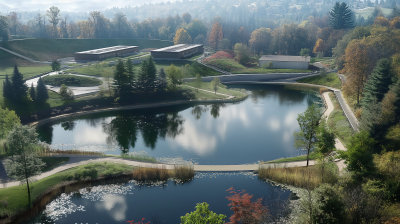
Two Part Series | Grade Control and Energy Dissipation - Maintaining Natural Channel Bed Stability
Recorded On: 2022/12/07
-
Register
- Non member - $40
- Professional member - $15
- Professional Plus member - Free!
- Professional Plus Org member - Free!
- Student member - $15
- Young Professional member - $15
- Emeritus member - $15
- Discounted Professional member - $15
- Australia Member - $15
- Australia Non-Member - $40
- Australasia Professional Plus - Free!
- Australasia Professional Plus Org - Free!
- Australian Student - $15
Two Part Series
Grade Control and Energy Dissipation - Maintaining Natural Channel Bed Stability
Presented by: David Williams, PE, CFM, PH, CPESC and Chris Estes, RLA, GC
Level: Beginner | Intermediate | Advanced
Duration: 2 hours
Type of Course: On-Demand
Natural and human activities can cause unstable changes in stream channel slope. Natural stable stream channels utilize riffle pool sequencing to armor against erosion and dissipate energy. Riffles armor the bed from swift flows while pools dissipate the energy and slow the flow. This is called dynamic equilibrium which can take centuries to evolve. When man made activities interrupt this sequence, a chain reaction begins. Slope change in stable streams can most often result in channel incision when bedrock or similar control is not present. The end result is a streambed and base flow that is significantly lower than its natural floodplain. This in turn produces bank erosion, collapse and deposition when the deeper channel is forced to convey larger storms.
Engineered grade control measures are typically used to mitigate this interruption in stability. Grade control structures can be composed of a variety of materials and configurations such as rock, wood and earth structures placed across the channel and anchored in the streambanks. We have learned to design like nature, mimicking natural conditions and processes, like bedrock outcrops, felled trees, riffles and pools.
Part one of this two part webinar presents typical examples where grade control measures are required, the types of grade control structures, how these structures dissipate the water’s energy, their pros and cons. Part two presents research and practice of pool design for culvert outlets, erosion control and aquatic passage.

David Williams
Dr. David Williams, PE, CFM, PH, CPESC, the president of DTW and Associates, has over 35 years of experience in the water resources industry and is known nationally and internationally for his contributions to the industry. He is well versed in the widely used computer programs HEC-1, HEC-HMS, HEC-2, HEC-RAS, HEC-6, STORM, and WQRRS. Dr. Williams is also a nationally recognized expert in sedimentation engineering, streambank protection, stream restoration, erosion control and in developing innovative solutions to difficult hydraulic and hydrologic design problems in rivers and estuaries.
Chris J. Estes, North Carolina, RLA, GC
President
Chris Estes is president of Estes Design, Inc., & owner manager of Anglesy Construction companies in Charlotte NC that specialize in Low Impact Development design & construction, storm water quality, and environmental regulatory services
Mr. Estes has conducted and published hydraulic research in peer review publications such as the Journal of American Water Resource Association and industry publications including Stormwater Magazine. He initiated four UNC Charlotte graduate research projects, and another which he conducted and co-authored. He has been a contributor to several books including the engineering Guide to LEED New Construction. Mr. Estes has developed patents in CO2 sequestration and continues to look for ways to learn and advocate for sustainable practices
Mr. Estes designed and researched the first multi-family pervious concrete (PC) parking system in NC and the first private and public (PC) lots in Kentucky. Mr. Estes assisted North Carolina Department of Environment and Natural Resources revise Chapter 18 of the NC BMP Manual, “Permeable Pavement” and continues to work with regulatory commissions to revise and update Low Impact Development standards

Ryan Alltop (Moderator)
Encap Inc.
You will receive 2 Professional Development Hour per session in this Webinar Series. You have the option to listen to as many presentations as you wish, however you will only receive education credit for the presentations you attended.



